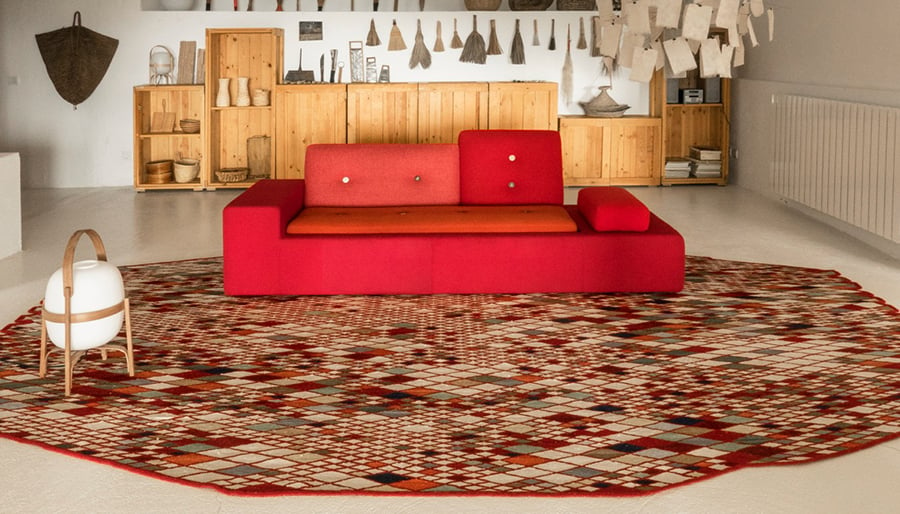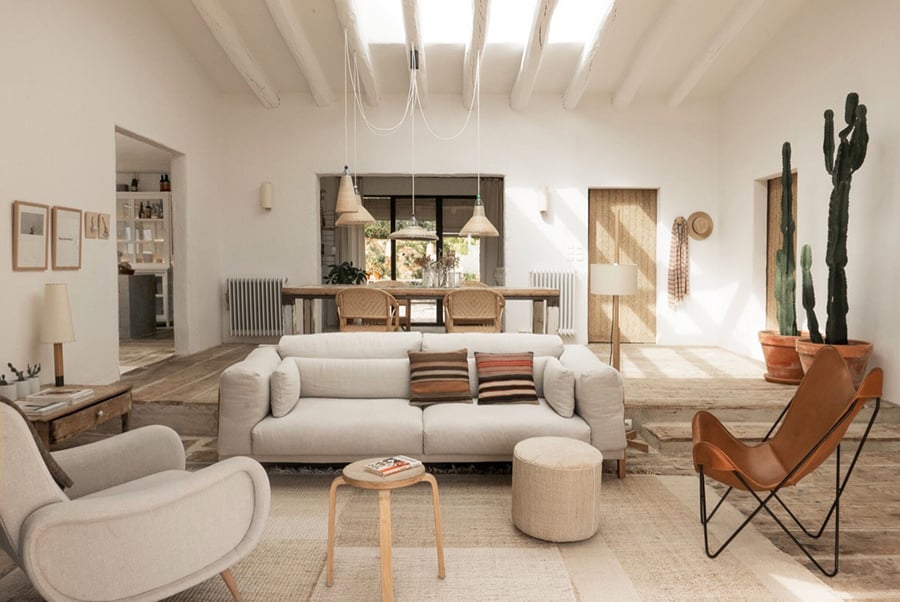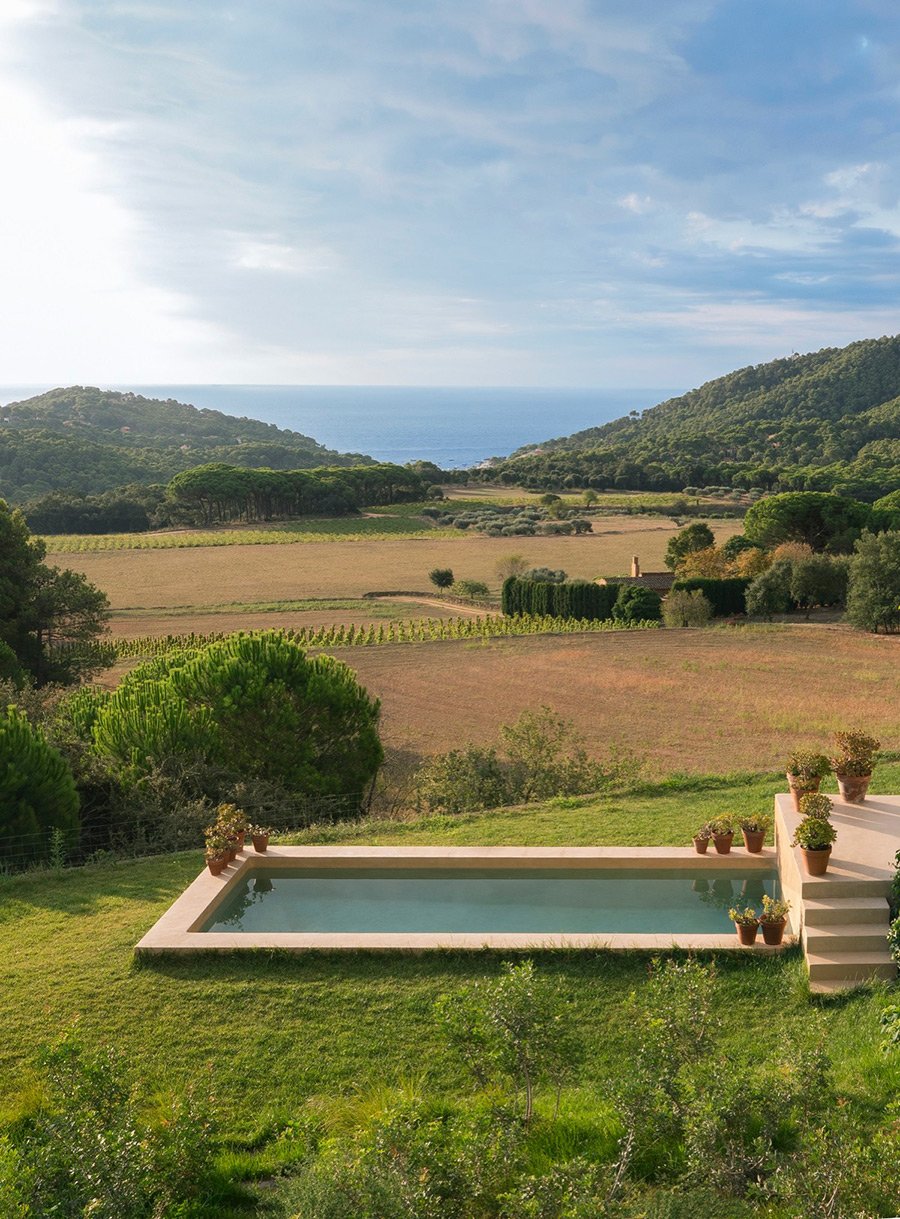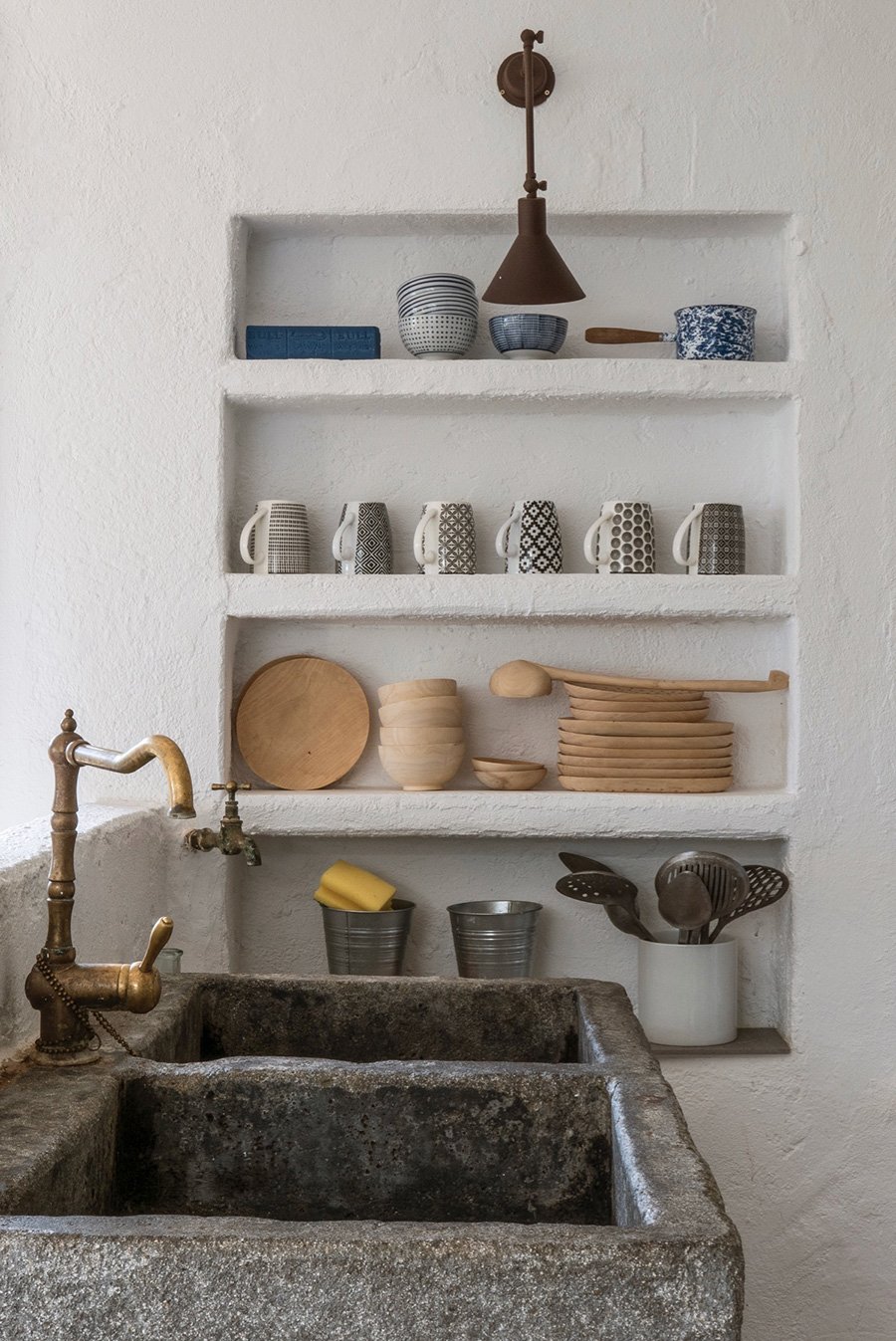
June 25, 2019
Inside Nani Marquina’s Spanish Vacation House
Situated on the Costa Brava coastline, the 3,200-square-foot dwelling was carefully renovated to preserve its historic look while blending in contemporary touches.

Albert Font was utterly charmed. The photographer—and husband of textile designer and Nanimarquina founder Nani Marquina—was out on a shoot, and the subject was a 1970s house on Spain’s Costa Brava coastline, specifically in the town of Esclanyà, Catalonia. The two-story stucco and terra-cotta dwelling was situated on a rugged hillside with sweeping ocean views. “If you ever think of selling…,” he hinted to the owner.
A few years later, that call unexpectedly came, and the couple jumped to finalize the purchase and create a new vacation home. “It was very simple and very white—with that unbeatable view,” says Marquina, who maintained the house’s simplicity while maximizing its vistas with her careful renovation.
Now it’s a 3,200-square-foot white canvas for both her carpets and Font’s photography. Teapots from the Sahara desert and Morocco, seeds from Pakistan, and more than two dozen straw brooms collected from her travels are all artfully displayed in a sun-drenched interior with whitewashed walls.
To cultivate the feeling “that we are in an old home with a lot of history,” says Marquina, signs of age and wear were left alone or covertly improved. On the main level, where the living and dining area, kitchen, and master suite are located, Marquina let paint splatters on the wide plank flooring remain. (These are from the previous owner, an artist.) She also gently spruced up a white stucco stair—one the textile designed admired for its organic curves—that leads to the subterranean lower level, which houses Marquina’s studio and a guest room. The rust-toned finish of the sliding glass doors, which draw in sweeping ocean views, is new. “We slimmed down the frame and oxidized the iron with sea water,” Marquina explains.
Furnishings are mostly vintage; some are iconic designer pieces, others are rich with personal history. On the downstairs terrace is a seating area of rough wood benches and a table once used by factory workers in India—and Marquina herself. “For three days I worked and ate from these,” she recalls. It took some convincing—and initial confusion—but eventually the factory sent the pieces to Spain along with a shipment of her rugs, free of charge. As the designer notes, “They likely had no value to them, but to me they’re a memory of a time.”
You may also enjoy “The Moxy Hotel Chelsea Offers an Italian Holiday in the Heart of Manhattan.”
Would you like to comment on this article? Send your thoughts to: [email protected]















